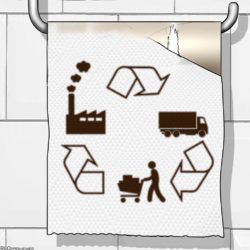Thou shalt stockpile!

In supply chain management, the 5 P’s are ‘Perfect Preparation Prevents Poor Performance’. You should always be ready for what might happen – and stockpiling should be part of those preparations, because robust supply chains need safety stocks… at suppliers and manufacturers, in distribution centres and in the sales channels. Safety stocks create breathing space in the case of disruption, such as when suppliers are out of action, customers have to close down for a while or your employees leave you in the lurch. The right buffer also helps you to recover again more quickly after a disruption.
By Walther Ploos van Amstel
How much safety stock is required depends on the uncertainty of supply and demand; put simply, more uncertainty means more stock. Otherwise, the end customer will be left empty-handed. Stockpiling makes sense, providing it is carefully considered and well informed. So what must you do as a manufacturer?
Thou shalt improve your forecasting!
One of the problems in the current coronavirus crisis is that, when it comes to medicines, intensive care capacities and face masks, there is uncertainty in both the supply and the demand. This uncertainty is even causing panic buying among consumers, resulting in empty shelves in stores. After all, how many people know exactly how much toilet paper their household uses, and how much pasta they’ve got left in the cupboard at home? Most of them have no idea. But as a manufacturer, do you know what is happening to the demand at the end of the chain and the supply at the start? There can be up to a dozen links in between.
Any drop in demand has an exaggerated effect on the upstream supply chain due to lower replenishment combined with a reduction in the safety stocks. It’s the classic bullwhip effect. If the retailer at the end of the supply chain decides to order 10% less, the manufacturer at the start of the chain will eventually see a 50 to 60% drop in demand, subsequently followed by a sudden upswing. That’s what happened after the 2008 crisis, and it will happen again in the future once the coronavirus crisis is over. Demand gets stuck on a logistics rollercoaster ride and drags inventory levels along with it. That is an inevitable consequence of our planning systems. The upswing will happen. The question for data analysts is: how soon, and how extreme?
So it’s fine to stockpile. But make sure you do it smartly and with restraint, based on the concrete data about the demand dynamics in your supply chain. If you don’t have access to the latest data, call or email your supply chain partners or set up a joint online dashboard. That’s the only way to take the right, data-driven stockpiling measures.
Thou shalt make quick decisions!
Set up a crisis team so that Purchasing, Production, Sales, Finance and Logistics can meet daily to discuss the necessary actions for that day. Make quick decisions, but don’t allow yourself to be guided by emotions, fake news and hysteria alone. Leave that to the panic-buying consumers. Filter the news, interpret the data and consult external experts.
Last but not least, involve your customers, logistics service providers and suppliers in your planned measures, starting right now. More information and greater alignment will enable you to make decisions that are ultimately better for the whole supply chain. Stockpiling is not such a bad idea after all.
Thou shalt build a robust supply chain!
If your supply chain isn’t robust, all the analysis in the world won’t prevent you from running into problems eventually. Are you aware of the risks and consequences of supply chain disruptions? You should review them at least once a year. Coronavirus isn’t the first crisis and it definitely won’t be the last. Armed with these insights, you can make effective use of your resources and capacity to become more robust: extra safety stock, back-up manufacturing and transport capacity, and a flexible outer layer. In the case of disruptions, flexibility also means being able to rapidly switch between several suppliers for a particular product, insourcing or alternative transport chains. However, you need to know where the goods are in the supply chain at any given time and where there is some free capacity; in other words, you need complete transparency. Identify the gaps using Supply Chain Media’s E2E supply chain assessment for coronavirus!
Work together with your customers, suppliers and service providers to ensure you can cope with supply chain disruptions by utilizing safety stocks, sharing capacity, and benefiting from your flexibility and end-to-end transparency. Reach concrete agreements with supply chain partners about how to prevent or resolve disruptions. What is your Plan B or Plan C if things go wrong? What are the initial warning signs? Who does what? And then, after every crisis, it’s important to work together to evaluate what you should do differently next time.
Dr Walther Ploos van Amstel is a professor of city logistics at Amsterdam University of Applied Sciences.









